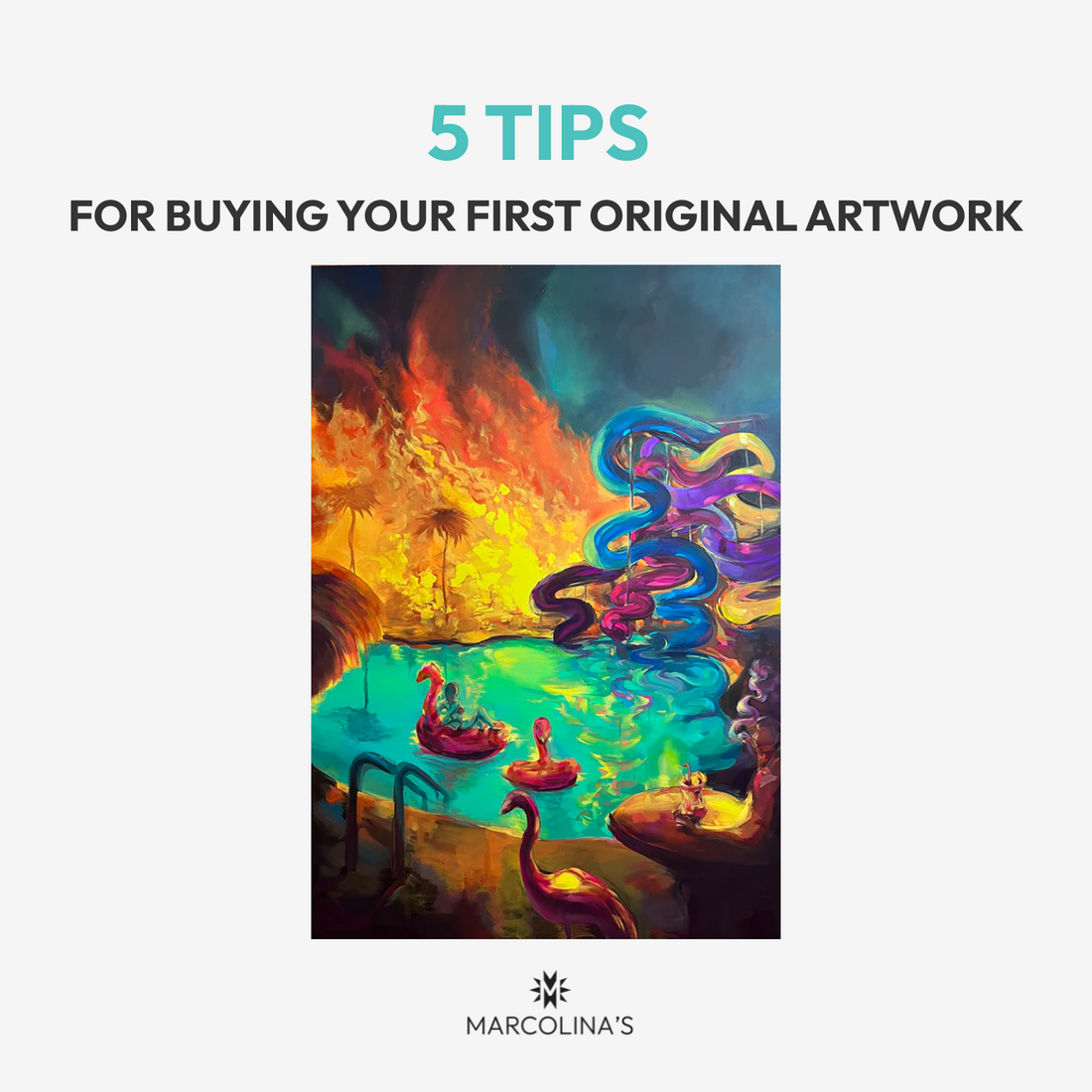Buying your first piece of original artwork is a thrilling experience, but it can also be a bit intimidating. How do you know you're choosing the right piece? And how do you avoid feeling overwhelmed? In this guide, we’ll break down five essential tips to help you confidently buy your first artwork while sticking to your budget and ensuring authenticity.
Set a Realistic Budget: Know What You Can Afford
Before diving into the art world, the most crucial step is to set a budget. Art can vary greatly in price, so it’s important to define what you're willing to spend, keeping in mind additional costs like framing, shipping, and installation.
Understanding Art Pricing
- Art Prices: The cost of artwork varies depending on factors such as the artist’s reputation, medium, and size. Prices at galleries like Marcolina's Fine Arts Gallery can range from $4,500 to $25,000 for original works .
- Start Small: If you're on a tighter budget, consider starting with smaller pieces like drawings or prints. These are often more affordable but still offer unique, one-of-a-kind art.
Factor in Additional Costs
When budgeting for your first art purchase, don’t forget about the extra costs involved:
- Framing: Framing can add anywhere from $100 to $500 depending on the size and materials used.
- Shipping: For large or long-distance artworks, professional shipping or art transport can be necessary, which adds to your total cost.
-
Sales Tax and Installation: Sales tax, usually 6–10%, and installation for large pieces are other expenses you should account for when calculating your final budget.
Research Artists and Art Styles: Find What Resonates with You
Once you’ve set your budget, it’s time to explore the art world and discover what truly resonates with you. Understanding your personal art style will guide your purchasing decisions and help you connect more deeply with the pieces you buy.
Explore Different Art Styles
Explore various art movements and styles to identify what speaks to you. Are you drawn to abstract art, realism, or modern minimalism? Pay attention to what moves you emotionally – this will help narrow down your preferences.
- Local Exhibitions: Attending art events and exhibitions is a great way to see art in person. Nothing beats the tactile experience of feeling the texture, scale, and lighting of a piece.
- Artist Talks: These events offer insight into the artist's vision, technique, and inspiration, helping you build a deeper connection with the art.
Identify Your Personal Preferences
As you explore, make note of the art that captures your attention. Over time, you’ll see patterns in the colors, styles, and themes you gravitate toward. Understanding why you are drawn to certain pieces will refine your taste and help guide your future purchases.
Verify Authenticity: Protect Your Investment
When purchasing original artwork, authenticity is key. Ensuring the piece is genuine protects both your investment and your peace of mind.
What Is Provenance?
Provenance refers to the documented history of the artwork, from its creation to its current owner. It ensures that the piece you’re buying is authentic and provides valuable context for its value. Ask for:
- Certificates of Authenticity (COAs): These documents verify the artwork’s legitimacy and often include the artist’s signature, creation date, and other important details.
- Provenance Records: Provenance details the ownership history and exhibitions the artwork has been part of, which can increase its value and ensure it’s not stolen or misrepresented.
Conclusion: Take the First Step with Confidence
With a clear budget, an understanding of art styles, and a focus on authenticity, you're ready to start your art collection. Stay tuned for more tips on where to buy artwork and how to select pieces that fit your space.

